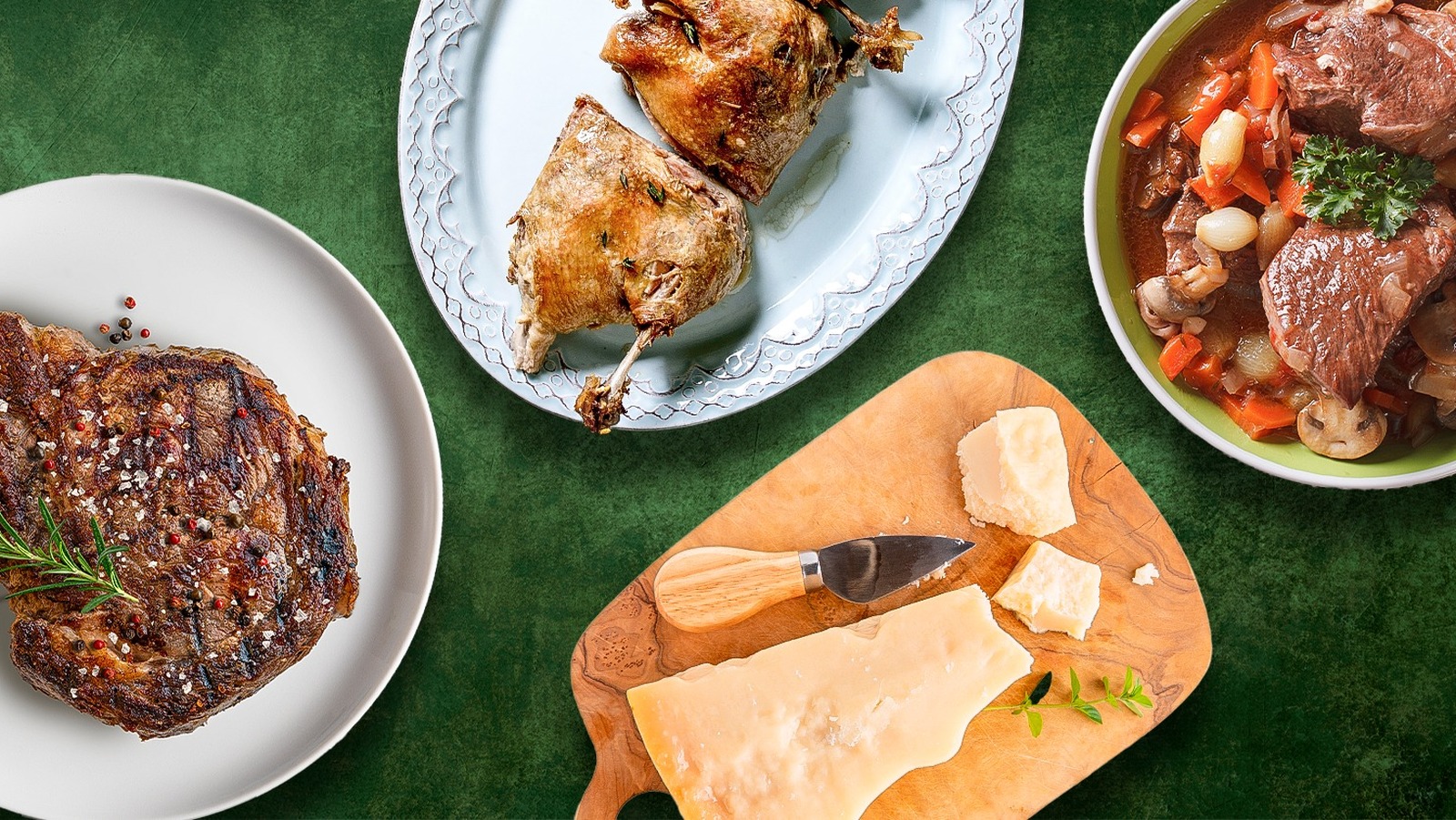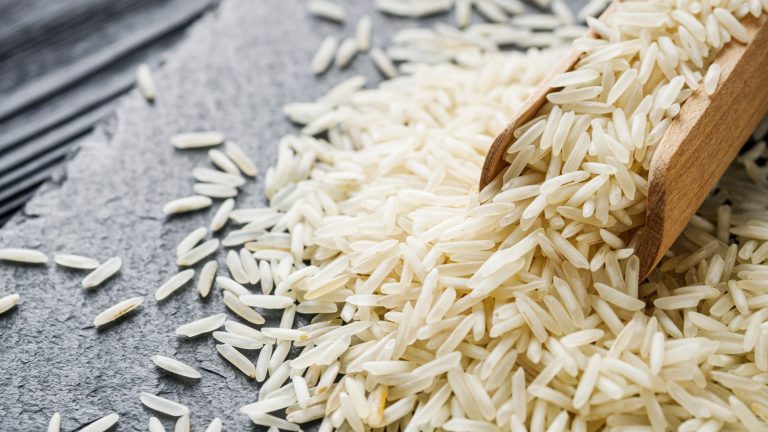When you begin thinking about the building blocks of good food, one of the first things you come in contact with are the five core tastes of the human palate: sweet, sour, salty, bitter, and umami. At least one of these is found in all of the foods we consume. But while each is important, they haven’t always shared equal recognition.
In 1901, a German food researcher named David P. Hänig published one of the first papers to dissect the way distinct tastes are impressed upon regions of our tongue. Hänig’s research lent a modern, scientific definition to the four core tastes — which had generally been agreed upon since the days of ancient Greeks — and a fifth, known as umami (or savoriness), was named some time after. Of course, since it took extensive time and research for umami to gain common inclusion among tastes, kokumi is an overnight celebrity by comparison.
Now, kokumi was only discovered in the very recent past, and given the nickname “sixth taste” even more recently than that. But the decades between the identification of, and inclusion, into the pantheon of taste has shown us one thing: kokumi isn’t really a taste at all. Those who study it have determined it’s actually something altogether unique; more of an addition, a reaction that modifies the five core tastes while providing mouthfeel. Here are 8 things to know about kokumi, the so-named sixth taste that will elevate your cooking.
Kokumi was first scientifically identified by a food corporation
The concept of umami was first introduced in a paper by Tokyo Imperial University chemist Kikunae Ikeda. After the paper was translated in 2002, English-speaking audiences became aware of a fifth flavor — one which had always been intrinsically understood, but hard to define. Greater research on umami was then undertaken in Japan, including by the Ajinomoto Group (a food, science, and biotechnology company also based in Tokyo), which eventually led to identifying kokumi.
In 1990, a scientist named Yoichi Ueda engaged in umami research related to onions and garlic, hoping to define what these ingredients bring to the table. This led to an isolation of glutathione — a peptide (or amino acid chain) that was received by the tongue in a specific way. This peptide makes foods feel lush and rounder around the edges, and, in Japanese, kokumi literally means “rich taste.”
Now, Ajinomoto claims it began research on kokumi in 1980, quickly turning to practical and commercial applications for glutathione. The goal was to induce a greater presence of kokumi into food more quickly, resulting in a yeast-based flavor modifier released in 1990 (Ajinomoto’s Yeast Extract). Of course, research into kokumi didn’t stop in the 20th century. In 2005, the Ajinomoto Group posited a new theory: The tongue’s impression of it was received primarily through its receptors for calcium, not the receptors that receive glutamic acid (or umami). This was proved in a later published study, which identified new peptides that created kokumi more intensely.
There is an unique peptide compound at play compared to umami
When researching kokumi, it seems like it’s always lumped in with umami. Part of that is naturally based on their origin of discovery and the language they’re named in. However, chemically speaking, the similarities between these two are few. According to the Kerry Health and Nutrition Institute, they are related in composition, but the overlap beyond that is minimal. After all, kokumi comes from things like glutathione and gamma-glutamyl peptides, while umami derives from glutamic acid.
Fundamentally, kokumi and umami act differently. The glutamates in umami trigger taste bud receptors on our tongue, which send a signal to our brain to specifically taste savoriness. Alternatively, kokumi compounds trigger sense receptors for calcium, which work more broadly, and spark a different sensation. On that note, you can have umami without kokumi, but you can’t have kokumi without specific flavors activating. What’s even more interesting is that umami already behaves differently on the tongue than other tastes do. Unlike sweetness, you can’t increase umami by adding more of what causes the taste sensation. In other words, you can’t dose your food with a bunch of MSG to boost levels of umami, and kokumi is different in this regard, too.
Additionally, the Ajinomoto Group introduced a newly isolated peptide in 2010 (called gamma-glutamyl-valyl-glycine or γ-EVG), which is incredibly powerful at lighting up calcium sensing receptors. This newer peptide has a direct correlation between its concentration and how much kokumi people sense within their food. This means a strong kokumi modifier may increase our perception of umami, potentially working in sync to deepen the overall experience of flavor.
Kokumi is closer to a sensation that intensifies other tastes
Research into the existence of kokumi suggests the chemical reactions which trigger it have more to do with sensations. While kokumi does impact the core five tastes to some degree, it tends to show greater influence over mouthfeel.
Kokumi makes for a deeper perception of how taste lands on our receptors; this is why ingredients might feel thick, or why certain flavors may grow, last, or change the longer they coat your tongue. Recently, research has begun summarizing kokumi’s effect into a new word: palatability. This attempt at defining kokumi was published in Science of Food in 2023, and it’s a pertinent word. After all, a lot of discussion around kokumi considers how it seemingly makes foods feel more caloric, fattier, and more consistent in flavor. The discourse says that kokumi enriches and rounds, which often seems to strengthen its association to umami (though this leaves out the potent point that the supposed sixth taste also cultivates harmony between other core tastes).
In short, kokumi makes foods that are sweet and salty more palatable, in addition to the savory. It can make sugar taste more complex, or deepen the effect of salt. Because of this, the food industry has begun looking at kokumi as a way to make nutrition-focused, low-fat, and low-calorie foods more enticing. Still, kokumi and umami will forever have a tough time beating the partnership allegations. That same Science of Food research from 2023 shows the complicating effects of kokumi on taste become even more strengthened with the presence of MSG — or a building block of umami.
Kokumi can be found naturally
A lot of kokumi is food science-y and fun to read about. Yet it’s practical and beneficial to understand kokumi as more than an abstraction, and more as something to work into your cooking. Kokumi can deepen your cooking in a really simple way: It’ll make you want to nosh, along with the people you’re feeding. Start by adding kokumi into your cooking with foods where it’s naturally present.
The first and likely most obvious food with natural kokumi is garlic. After all, it’s what Ueda first investigated in 1990, when he added garlic solution to soup to try and figure out which diners preferred. Kokumi will emerge from garlic when it’s soaked in oil, or when cooked. And if you can score some, black garlic is high in γ-glutamyl-cysteine, a sulfur that is a particularly potent source of kokumi. Onions also have compounds that develop into kokumi, as do mushrooms.
Kokumi from meat is currently a highly researched point, as kokumi doesn’t show up raw. But kokumi may be an evolutionary craving that drew us towards cooked meats, as it exists significantly in several other animal products (like egg yolks and scallops). Kewpie Mayo (which differs from other mayonnaises) recently proposed that a greater concentration of egg yolks in mayo correlates to greater kokumi. Additionally, Food Chemistry found in 2013 that γ-glutamyl-valyl-glycine — a kokumi peptide — is present in raw and processed scallops alike.
It’s highly present in aged and fermented foods
You can stock your pantry with ingredients possessing natural kokumi, of course, but aged or fermented products offer an even easier route to imparting the supposed sixth taste. Soy sauce, fish sauce, shrimp paste, mirin, miso, and beer are all things that develop complex flavor on account of kokumi peptides being present. Worcestershire sauce is another, as is balsamic vinegar. Tinned anchovies in tomato sauce would be packed with kokumi, as well … and then there’s cheese.
Aged cheese is teeming with kokumi. Mature gouda cheese has been demonstrated to have the holy grail of peptides with kokumi and umami together, meaning it’s because of science that we might eat the entire wedge in one sitting. Parmesan exemplifies this, too. Plus, understanding what makes cheese so more-ish has implications for how people develop non-dairy and vegan alternatives to all sorts of foods.
Nattō (or Japanese soybeans), are another kokumi-rich food, which develops peptides as it ferments. The process introduces kokumi to certain red wines, as well, and it can also be present in cacao that’s been fermented. In the presence of fermented substrates like koji, an increase of kokumi peptides can be correlated to microbial action, similar to how yeast was used in the first processed kokumi modifiers.
Your favorite cooking methods are already building kokumi
As with fermented or aged goods, when you introduce the ever-important ingredient of time into hot cooking, kokumi can come along. That’s an exciting thing about it — you’re likely already introducing kokumi into your food at home. Braising, stewing, and simmering are all processes that help kokumi develop. Emulsified butter or veloute sauce are other ways to impart it, and the fat immersion of a slow confit can, as well.
Now, how does kokumi occur in these circumstances? In layman’s terms, heat breaks proteins down into smaller bits, including kokumi peptides. Because too much heat can also cause instability, and some kokumi peptide compounds are more volatile than others, heating low and slow is the best way to cultivate the sensation in a stable environment. This also explains why some foods lose that rich mouthfeel when overcooked.
Sometimes in hot cooking, the process of building kokumi is referred to as something different or specific. What we know as the Maillard reaction, for example, is actually the creation of kokumi. Heat is applied to meat, amino acids and sugars are reduced, and Maillard peptides are created. These Maillard peptides, which we see as a brown sear, are where kokumi comes from.
Layering ingredients is important if you’re trying to build kokumi
By selecting the right ingredients and applying patient cooking techniques, you’re already giving your food an excellent shot at developing kokumi, which will make the food you’re cooking satisfying and craveable. Plus, it’s pretty simple to implement, so you can feel cool knowing you’re working with a concept like kokumi off of those two things alone. Yet the opportunity to bring kokumi forward doesn’t end there. In fact, there’s the technique of layering, which is really just the art of developing kokumi.
Layering your ingredients is important when making a number of dishes, including a soup or a curry. Seasoning your food in layers — whether that food is a pasta sauce or chili — allows each ingredient the opportunity to build without breaking down important flavor compounds.
For instance, onions and garlic will develop kokumi peptides at different times and temperatures than mushrooms will. Cooking tomatoes down to brown (before you add water), meanwhile, will give your Bolognese more Maillard peptides than if you’d swamped them. In that sense, the layering of ingredients is really just another practice for bringing kokumi into your cooking.
Researchers are trying to isolate and impart kokumi to make foods taste better
If kokumi does, in fact, have some ties to the evolution of humans via cooked food, then it has the potential to be more than just something that makes food taste better. Rather, kokumi as an additive has the potential to make different foods — like meat alternatives — taste closer to our evolutionary cravings than they otherwise would. As a result, food science research around isolating and commercializing kokumi is red hot.
Longtime players (such as the Ajinomoto Group) offer industrial solutions for creating kokumi. Its Savorboost product is a line of yeast extracts that can shortcut the process, making foods taste rounder and richer. Similarly, the Australian Meat Processor Corporation has been undertaking research to try and isolate kokumi compounds in red meat offal. Doing so can process a category of potentially wasted cuts into flavor modifiers that maintain use in the kitchen. Similarly, research published in the Journal of Agricultural and Food Chemistry in 2024 showed fermentation might be a way to make pea protein more perceivably full of kokumi, and thus more craveable and full-flavored in vegan foods.
By isolating the peptide combinations that make kokumi so clearly sensable in aged cheeses, food scientists are also getting closer to addressing one of the biggest problems with dairy-free cheeses: That eaters don’t desire them the same way we do with the traditional stuff. Identifying potential supplemental sources of kokumi can help food producers make products that taste complex and true, which is the kind of thing both meat eaters and vegans can get on board with.





